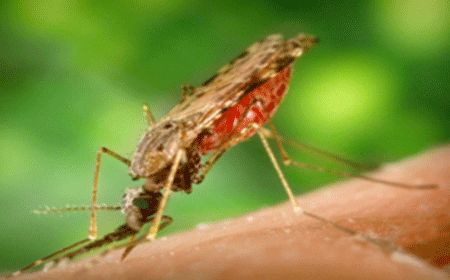BELIZE CITY, Mon. Aug. 10, 2015–Bloodsucking mosquitos which transmit diseases such as dengue, chikungunya and malaria tend to become more common with more frequent rains, but despite unseasonably dry and hot spells over most of Belize in the recent months, the country has seen a spike in dengue cases, due largely to an outbreak reported in Toledo, southern Belize, where the number of dengue cases up to the end of July has increased almost 9-fold over the same period last year.
Last year, Belize City was the location of greatest concern, with the number of dengue cases, and also the potentially deadly dengue hemorrhagic cases, being most plentiful in that municipality. This year, the number of dengue cases in the Belize District has dropped from 107 for the first 7 months of 2014 to 58 for the same period this year.
According to Kim Bautista, Chief of Operations for Belize’s National Vector Control Program, nationally, the number of laboratory-confirmed cases of dengue has increased by 16% for the period stretching from the start of the year to the end of July.
While Belize City has seen a 46% reduction in the number of lab-confirmed dengue cases, from 107 last year to 58 this year, Toledo has seen a spike from 9 cases reported for the same duration last year to 80 this year.
Bautista indicates that the Belize City, Central Health Region has been very proactive in health education and cleanup campaigns.
Cayo has reported 36 lab-confirmed cases of dengue, and health authorities are focusing their most recent campaign on some hotspots there, specifically Camalote, Cotton Tree, San Martin, Maya Mopan, and Salvapan.
They are also focusing on hotspots in Corozal Town: Alta Mira, Caledonia, Copper Bank, San Narciso, and Santa Clara.
In an update on chikungunya–– the emerging communicable disease which was first diagnosed in the Caribbean last year – Bautista reports that two positive cases were tested so far for 2015 at the Central Medical Laboratory in Belize City for persons in Belize City and Cotton Tree who have traveled to places where the virus is endemic. These are in addition to the 8 cases of Chikungunya (5 from Las Flores, Belmopan; plus 3 imported cases) which were confirmed in Belize last year.
Belize has made major progress towards the near eradication of malaria, with the incidences having declined 98.7% over the past 15 years. Bautista reports that while Belize reported 1,486 cases of malaria in 2000, that figure was down to just 19 cases in 2014. A total of 9 malaria cases have been reported so far for 2015.
The Ministry of Health’s vector control war chest includes 18 ULV (ultra-low volume) machines, 25 thermal foggers and 15 vehicles for deployment.
Bautista notes that the biggest challenge is public education – engaging citizens to do their part. He stresses that the work of the vector control unit amounts to only about 20% of what needs to get done to prevent dengue, and notes the need for behavioral change, as on-the-ground inspection has shown that tires, drums, bottles, poor drainage and improper garbage disposal are the primary sources of breeding grounds for mosquitoes in affected communities.

